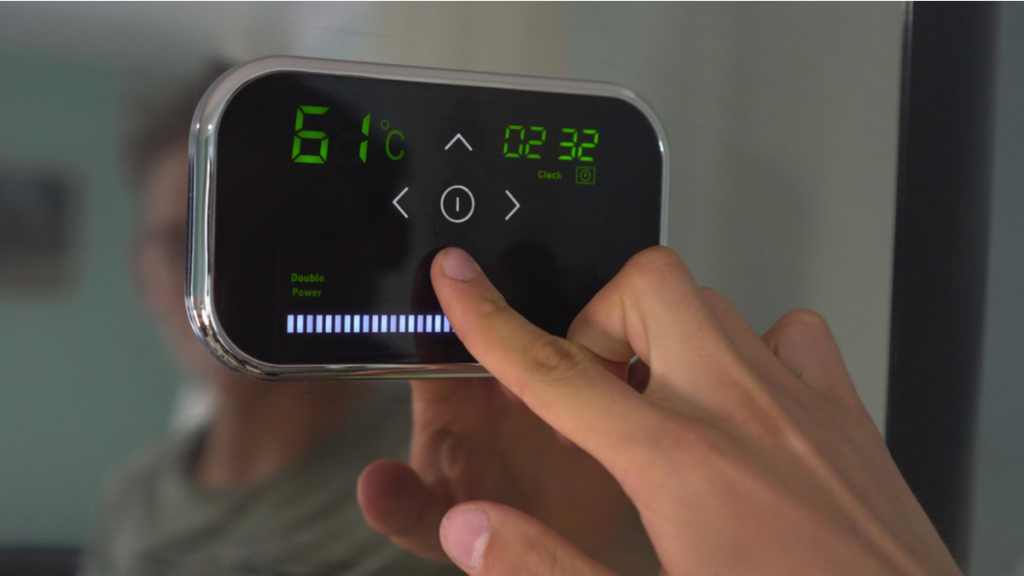Traditionally, HVAC controls have largely been manual or, at best, rudimentary automated systems. They required constant monitoring and adjustments to maintain the desired temperature and ventilation conditions. This archaic control method had several drawbacks, including energy inefficiency and inconsistent indoor climates.
However, with advancements in technology, we are now in a modern era where HVAC systems have integrated digital controls. The emergence of these high-tech controls represents a significant leap in HVAC technology, and they are becoming increasingly popular, particularly in the context of PTAC Units.
Understanding HVAC Systems with Digital Controls
Digital controls in HVAC systems have revolutionized the way we manage indoor climates. These controls are essentially smart, automated systems that constantly monitor and adjust your HVAC system’s operation to optimize efficiency, comfort, and longevity. They work by receiving information from various sensors about current conditions and then making necessary changes.
The difference between traditional HVAC systems and those with digital controls is significant. Traditional systems generally operate on simple thermostats and timers, turning on and off at set intervals or temperatures. In contrast, digital control systems continuously adjust HVAC operation based on real-time conditions, leading to more efficient and effective heating and cooling.
The 10 Benefits of Upgrading to a Digital Control HVAC System
Improved Energy Efficiency
Digital controls significantly optimize your HVAC system’s energy usage. By constantly adapting to real-time data from sensors, these systems can reduce unnecessary heating or cooling, reducing energy consumption. This continuous monitoring and adjusting also prevents excessive wear and tear on your units, promoting overall energy efficiency.
Enhanced Comfort
Another major benefit of digital controls is personalized comfort settings. These systems allow users to set preferred temperature ranges for different times of the day or for different rooms. They consistently maintain these settings, ensuring a comfortable indoor environment without requiring constant manual adjustments.
Lower Operating Costs
By reducing energy consumption, digital controls naturally decrease operating costs. Additionally, they can identify potential problems early, enabling preventive maintenance and reducing expensive repair costs. The ease of operation also reduces the time and effort required to manage your HVAC system, contributing to overall cost savings.
Real-time Data Monitoring
Digital control systems have the capability to monitor HVAC system performance in real time. They provide insights into various aspects like energy consumption, system efficiency, and potential issues. This constant monitoring and data collection allow for more informed and timely decision-making about your HVAC system.
Ease of Use
The user-friendly interfaces of digital control systems simplify HVAC control. These interfaces provide a clear and intuitive way to adjust settings, monitor system performance, and detect any potential issues.
Remote Access & Control
Another major advantage is the ability to control your HVAC system remotely. This feature offers flexibility and convenience, especially for larger properties or multiple sites, as you can manage your HVAC system from anywhere, anytime.
Predictive Maintenance
By using real-time data, digital controls can predict potential system issues before they cause significant damage. This predictive maintenance helps prevent unexpected system failures and extends the lifespan of your units.
Longer Lifespan
Through efficient operation and predictive maintenance, digital controls can extend the life of your HVAC equipment. By reducing unnecessary strain and addressing potential issues early, these systems ensure your equipment lasts longer.
Zoning Capabilities
Digital controls enable more precise temperature zoning. This means you can set different temperatures for different areas or rooms, enhancing comfort and optimizing energy usage.
Integration with Other Smart Devices
Many digital control systems can be integrated with other smart home devices. This integration allows for a more holistic approach to home automation, enhancing convenience and efficiency.
Considerations When Upgrading to a Digital HVAC System
Before upgrading, consider the initial cost of the digital control system. While these systems often result in long-term savings, they can require a significant upfront investment. Also, consider the installation process – it may require professional assistance and some disruption to your usual routine. Lastly, compatibility with existing equipment is essential. Some older HVAC systems may not be compatible with all types of digital controls.
Conclusion
Upgrading to an HVAC system with digital controls offers numerous benefits – from improved energy efficiency and enhanced comfort to lower operating costs and longer equipment lifespan. Despite the considerations needed before upgrading, the advantages significantly outweigh the initial cost and effort. In today’s technologically advanced world, digital controls play a pivotal role in creating optimal indoor climates, and their integration in HVAC systems, particularly PTAC units, is a smart move towards more efficient, comfortable, and sustainable living.

